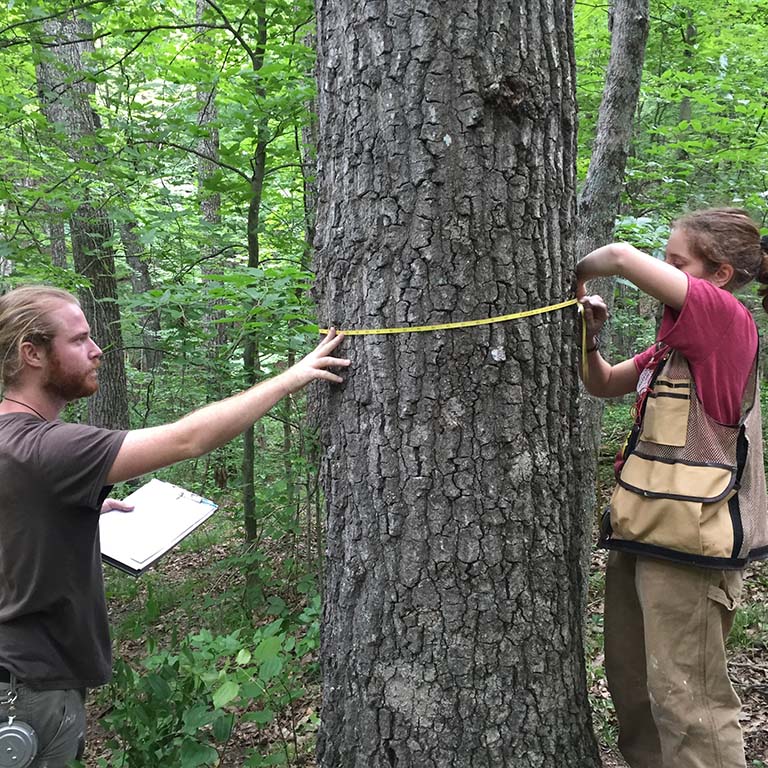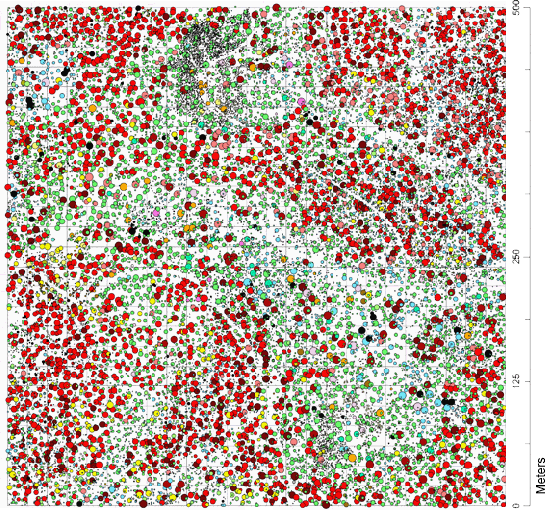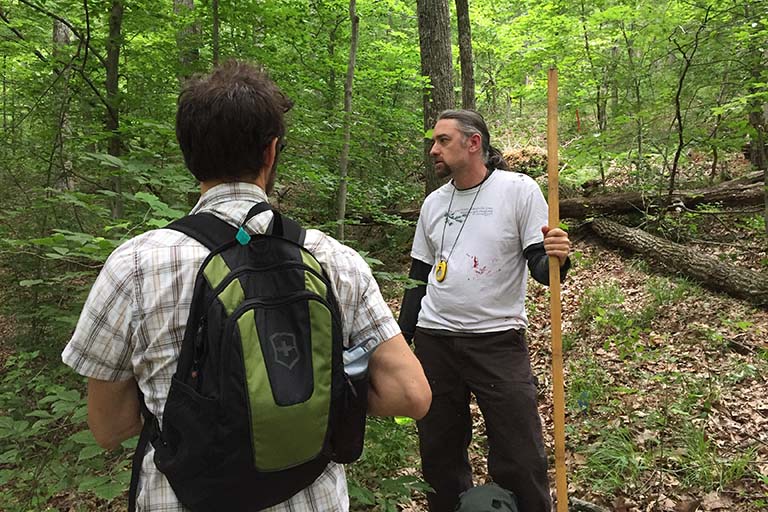A study published this month in Science reveals fundamental differences in the nature of local-scale biotic interactions that contribute to the maintenance of species diversity across temperate and tropical communities. The study examined data from more than 3000 species and nearly 2.4 million trees from 24 forest plots around the planet.
Tree species diversity in tropical forests is thought to be maintained by specialized interactions among plants and their natural enemies that result in conspecific negative density dependence (CNDD). Pathogens associated with adult trees can be fatal to seedlings growing near adults of the same species, so the farther the seedlings are from their parents, the greater their chance of survival. Where pathogens/CNDD are strong, forests are more diverse. Ultimately, CNDD is a mechanism to promote diversity.
One of the forest plots in the study was the 25-hectare (62-acre) plot at the Indiana University Research & Teaching Preserve's Lilly-Dickey Woods. Contributing to the study were Keith Clay, distinguished professor of biology; former graduate student Dan Johnson, Clay lab, Ph.D. 2013; and Rich Phillips, associate professor of biology. Phillips is also science director for the IURTP.



 The College of Arts
The College of Arts